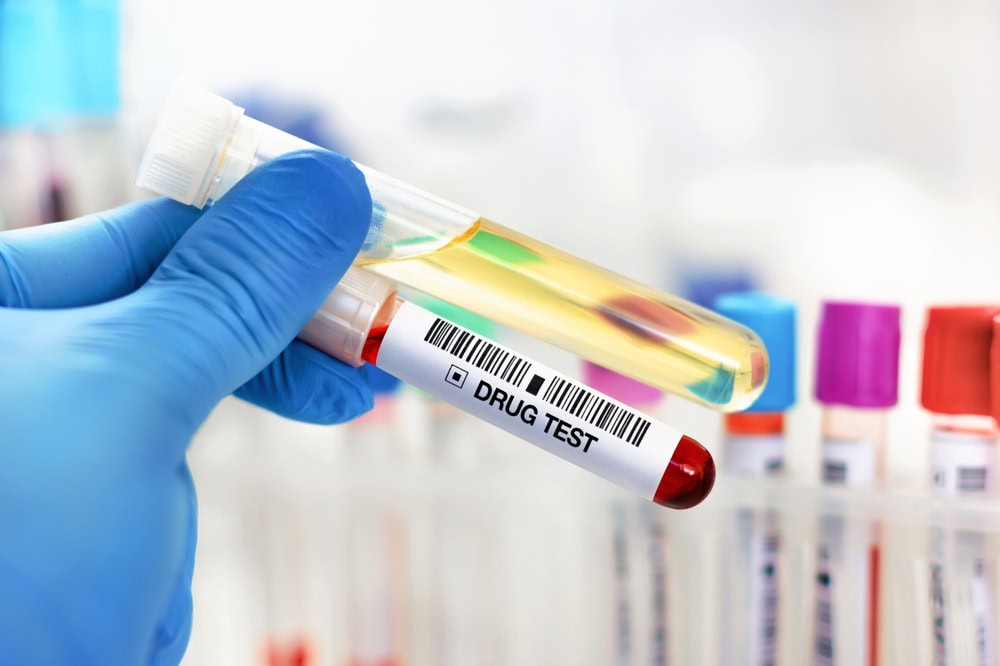How Reliable is Drug Testing? Breaking Down the Science

Introduction to Drug Testing
Drug testing is a systematic process used to detect the presence of illegal, prescription, or over-the-counter drugs within an individual’s system. It serves various purposes, ranging from ensuring workplace safety to monitoring compliance in rehabilitation programs. As drug use becomes increasingly scrutinized in society, understanding the reliability of drug testing methods and their implications has never been more crucial.
Historically, drug testing has evolved significantly. Early methods were rudimentary and often inaccurate, relying on simple observation and behavioral assessments. By the mid-20th century, as drug abuse became more prevalent and socially relevant, scientific advancements led to the development of more sophisticated testing methods. This evolution not only enhanced accuracy but also expanded the scope of substances that could be tested.
Types of Drug Testing
Urine Drug Testing
Urine drug testing is the most common method used in various settings, including workplaces and legal contexts. This method detects drugs in urine samples, with the advantage of being non-invasive and relatively easy to administer. Typically, urine tests can detect a wide range of substances, including THC (marijuana), cocaine, opiates, and methamphetamines. They are particularly popular because they can identify drug use that occurred days or even weeks prior, depending on the substance.
However, urine tests are not without limitations. Certain factors, such as hydration levels and the presence of certain foods, can affect the concentration of drugs excreted in urine. Additionally, users may attempt to manipulate test results through various means, such as dilution or substitution, leading to concerns about the integrity of the test.
Blood Drug Testing
Blood drug testing is another prevalent method, particularly in medical and forensic contexts. This method involves drawing blood and analyzing it for the presence of drugs and their metabolites. Blood tests are known for their accuracy and are particularly effective in determining the active presence of a drug in the system at the time of testing.
Despite its accuracy, blood testing has practical drawbacks. The need for professional administration can limit its use, particularly in workplace settings. Furthermore, the detection window for blood tests is typically shorter than that of urine tests, often only revealing use within hours or days, which may not align with the needs of employers or law enforcement seeking a broader timeline of drug use.
Saliva Drug Testing
Saliva drug testing has gained popularity due to its ease of administration and quick results. This method involves collecting saliva from the mouth and testing it for drug residues. Saliva tests are particularly useful for on-site testing, such as roadside checks for impaired driving, as they can provide immediate results.
The detection window for saliva tests is relatively short, typically only covering recent drug use within hours or a few days. While this method is less invasive and easier to administer than blood tests, its accuracy can be influenced by factors such as oral hygiene and the presence of certain substances in the mouth, leading to potential false positives or negatives.
Hair Follicle Drug Testing
Hair follicle drug testing is a method that can detect drug use over an extended period, often up to 90 days. This method analyzes a small sample of hair for drug metabolites, making it highly effective for assessing long-term substance use. It is particularly useful in legal cases or employment settings where a comprehensive view of an individual’s drug history is required.
However, hair testing has its limitations. The process is more invasive than urine or saliva tests and can be affected by external factors such as hair treatments. Additionally, the method may not detect very recent drug use, as it takes time for drugs to be integrated into the hair follicles. Thus, while hair testing provides a long detection window, it may not be suitable for all situations.
Understanding the Science Behind Drug Testing
Biological Mechanisms of Drug Detection
The foundation of drug testing lies in the biological mechanisms that govern how substances are metabolized and excreted from the body. When drugs are consumed, they undergo metabolic processes that convert them into various metabolites, some of which may remain in the body long after the effects of the drug have worn off. These metabolites can be identified through various testing methods, allowing for the detection of drug use.
Each drug has a unique metabolic pathway, influencing its detection in different testing mediums. For instance, THC is fat-soluble and can remain in the body for weeks, while substances like cocaine are metabolized and excreted more quickly. Understanding these biological mechanisms is vital for interpreting test results accurately and ensuring the appropriate type of test is chosen for the situation at hand.
Factors Influencing Drug Test Results
Several factors can influence drug test results, including the individual’s metabolism, frequency of use, and the specific testing method employed. Metabolism varies significantly between individuals, influenced by genetics, age, body mass, and overall health. Chronic users may have detectable drug residues for longer periods than occasional users due to cumulative effects and slower metabolic rates.
Additionally, the time elapsed since drug use is a critical factor. Drugs can be detected in varying windows depending on the testing method. For instance, a substance may be detectable for days in urine but only for hours in blood or saliva. Therefore, understanding these variables is essential for accurately interpreting drug test results and assessing an individual’s substance use history.
The Role of Cut-Off Levels in Drug Testing
Cut-off levels are predetermined thresholds used to interpret drug test results and are crucial in ensuring the accuracy of drug testing. These levels help differentiate between negative and positive results, taking into account the possibility of trace amounts of drugs from passive exposure or medical use. If a substance is detected below the cut-off level, the result is considered negative, while detection above the threshold is deemed positive.
Establishing cut-off levels requires careful consideration of scientific data, including the pharmacokinetics of drugs and their metabolites. It is essential to use standardized cut-off levels to reduce ambiguity and ensure consistent interpretation across different laboratories and testing methods. However, variations in cut-off levels can also contribute to discrepancies in test results, making it crucial for employers and medical professionals to understand the implications of these thresholds.
Reliability and Accuracy of Drug Testing
Comparing Different Testing Methods
The reliability of drug testing methods can vary significantly. Urine tests tend to be the most commonly used due to their convenience and broad detection capabilities. However, while they are generally reliable, their accuracy can be affected by factors such as sample handling and the potential for adulteration. Blood tests are considered highly accurate but are less frequently used due to the invasiveness of the collection process.
Saliva tests offer a balance between ease of use and accuracy for detecting recent drug use, making them suitable for on-the-spot testing. Hair follicle tests provide a long-term view of drug use history but can be more susceptible to external contamination. Each method has its strengths and weaknesses, and the choice of testing method should align with the specific needs of the situation, whether it be for employment, legal, or medical purposes.
False Positives and False Negatives
One of the significant concerns in drug testing is the occurrence of false positives and false negatives. A false positive occurs when a test indicates drug use despite the absence of the substance, while a false negative suggests the absence of drugs when they are present. Both scenarios can result from various factors, including cross-reactivity with other substances, the presence of certain medications, and sample handling errors.
To mitigate these risks, confirmatory testing using more specific methods, such as gas chromatography-mass spectrometry (GC-MS), is often employed following an initial positive result. This secondary testing can help verify results and reduce the likelihood of erroneous conclusions. It is crucial for individuals subjected to drug testing to be aware of the potential for inaccuracies and the importance of follow-up testing in the event of a positive result.
Impact of User Factors on Test Results
The individual characteristics of the person being tested can significantly impact drug test results. Factors such as age, body weight, overall health, and hydration levels can influence how drugs are metabolized and excreted. For instance, older individuals may process drugs differently than younger users, leading to variations in detection times.
Additionally, the type of drug consumed and the frequency of use will also play a role in test outcomes. Chronic users may have higher concentrations of drug metabolites in their system, while infrequent users may clear substances more rapidly. Understanding these factors is essential for interpreting results accurately and recognizing that drug testing is not always a straightforward reflection of recent use.
Quality Assurance in Drug Testing
Standards and Regulations for Drug Testing Laboratories
Quality assurance in drug testing is vital for maintaining the integrity and reliability of testing processes. Laboratories conducting drug tests must adhere to strict standards and regulations to ensure accuracy and consistency. Organizations such as the Substance Abuse and Mental Health Services Administration (SAMHSA) set guidelines for laboratory practices, including proficiency testing and quality control measures.
Compliance with these regulations helps minimize errors and ensures that laboratories are equipped to handle various testing methods effectively. Accreditation from recognized bodies, such as the College of American Pathologists (CAP) or the Joint Commission, further enhances the credibility of drug testing laboratories and assures clients of the reliability of the results produced.
Importance of Chain of Custody in Drug Testing
The chain of custody is a critical component in drug testing that ensures the integrity of the sample from collection to analysis. Proper documentation and procedures must be followed to maintain a clear record of all individuals who handle the sample, thereby preventing tampering or contamination. A well-documented chain of custody helps protect the rights of individuals being tested and fortifies the credibility of the results.
Failure to adhere to chain of custody procedures can lead to legal challenges and questions about the validity of test results. For this reason, organizations that implement drug testing policies must ensure that their staff is trained on the importance of maintaining the chain of custody and that all procedures are strictly followed to uphold the integrity of the testing process.
Technological Advances in Drug Testing
Recent advancements in technology have significantly improved the reliability and efficiency of drug testing methods. Innovations such as mobile testing units and rapid testing kits allow for immediate results, which can be crucial in situations such as roadside checks or workplace testing. Furthermore, laboratory technologies like liquid chromatography-tandem mass spectrometry (LC-MS/MS) have enhanced the specificity and sensitivity of drug detection, reducing the likelihood of false positives and negatives.
Additionally, emerging technologies such as breath analyzers for drug detection are being developed, which promise non-invasive testing options with quick results. As technology continues to advance, the landscape of drug testing is likely to evolve, potentially leading to more accurate and user-friendly testing options in the future.
Challenges and Limitations of Drug Testing
Legal and Ethical Considerations
Drug testing is often fraught with legal and ethical challenges. Issues such as consent, privacy, and the potential for discrimination come into play, particularly in workplace settings. Employers must navigate the fine line between ensuring a safe work environment and respecting the rights of employees. Clear policies and open communication are essential to address these concerns and foster a culture of transparency.
Moreover, the legality of drug testing varies by jurisdiction, with some regions imposing strict regulations on when and how testing can be conducted. Employers must stay informed about local laws and ensure compliance to avoid potential legal repercussions. Ethical considerations also extend to how test results are used, particularly in cases where individuals may face significant consequences based on the outcomes of their tests.
Public Perception and Stigmas Surrounding Drug Testing
The public perception of drug testing often carries stigmas, particularly associated with substance use disorders. Many individuals view drug testing as an invasion of privacy or as a punitive measure rather than a preventive or safety-oriented practice. These perceptions can lead to resistance against drug testing policies, particularly in environments where trust and morale are crucial.
Addressing these stigmas requires open dialogue and education about the purpose and benefits of drug testing. Employers and organizations should emphasize that drug testing is not solely about punishment but rather about ensuring safety, health, and compliance with regulations. Building a culture of support around substance use issues can help mitigate the negative perceptions associated with drug testing.
Conclusion
Summarizing the Reliability of Drug Testing
The reliability of drug testing is influenced by a multitude of factors, including the testing method used, biological mechanisms, user characteristics, and the quality assurance of laboratories. While significant advancements have been made in drug testing technology, challenges such as false positives, legal considerations, and public perception remain pertinent. Understanding these aspects is crucial for both individuals and organizations involved in drug testing.
The Role of Reliable Testing in Drug Testing
As the landscape of drug use and testing continues to evolve, the importance of reliable drug testing becomes increasingly evident. By staying informed about the latest advancements, maintaining ethical practices, and addressing public perceptions, organizations can foster a culture of safety and support surrounding drug testing. Continuous dialogue and education will play a pivotal role in shaping the future of drug testing, ensuring it remains a valuable tool in promoting public health and safety. When you are ready to talk to a drug testing specialist contact us at Relialab Test for more information.








